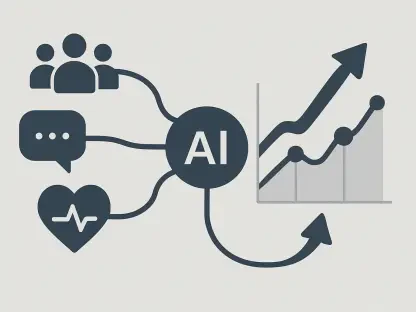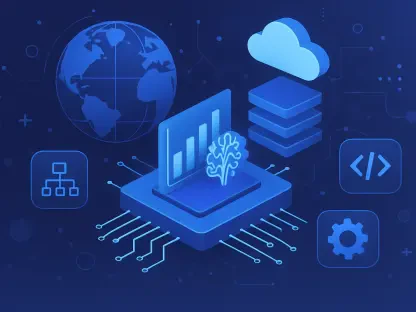The evolution of Business Intelligence (BI) has seen a significant transformation over the past few decades, and it continues to evolve with the integration of Artificial Intelligence (AI). With each new development, the question arises: will AI eventually render human analysis obsolete? While AI has brought extraordinary efficiency and speed to data analysis, we must consider whether it can fully replace the nuance and contextual understanding that human analysts bring to the table. Exploring the synergy between AI and human insights is crucial as businesses navigate the ever-changing landscape of BI to maximize efficiency and decision-making.
Overview and Evolution of Business Intelligence
The journey of Business Intelligence can be traced through several evolutionary stages, each marked by distinct technological advancements and methodologies. Initially, BI 1.0 mainly involved basic data reporting and analysis tools, relying heavily on spreadsheets like Excel for crunching numbers and generating reports. Although rudimentary by today’s standards, these tools laid the foundation for data-driven decision-making processes. The limitations of these early tools were soon recognized, and a more sophisticated era emerged. Enter BI 2.0, where user-friendly platforms like Tableau and Power BI democratized data analysis, making it accessible to a broader range of professionals. These tools allowed users to visualize data in ways that were previously unimaginable, significantly enhancing the ability to derive actionable insights.
The transition from BI 2.0 to BI 3.0 was marked by the integration of big data and real-time analytics, enabling organizations to make faster and more informed decisions. This was a game-changer in industries where timing is critical, such as finance or retail, where understanding customer behavior in real-time could lead to immediate strategic adjustments. The current era, known as BI 4.0, further amplifies these capabilities by incorporating AI to create smarter, more efficient systems. AI-driven BI can process vast amounts of data at lightning speed, recognizing patterns and making predictions with minimal human intervention. This significant shift signifies the industry’s trajectory toward more automated, but nuanced, decision-making structures, where AI and human intelligence coalesce to produce optimal outcomes.
Role of AI in Business Intelligence
AI has undeniably revolutionized the capabilities of Business Intelligence by enabling organizations to process and analyze vast amounts of data with unparalleled speed and accuracy. One of the core strengths of AI lies in its ability to recognize complex patterns within datasets that would be nearly impossible for human analysts to detect. Utilizing machine learning algorithms, AI systems continuously refine their analytical processes, making them increasingly accurate over time. This has several implications for businesses, including the ability to generate insights within seconds—a task that would be time-consuming if performed manually. The enhanced speed of AI allows for more agile decision-making, enabling organizations to respond quickly to market changes or operational inefficiencies.
Moreover, AI brings a level of accuracy to BI that substantially reduces the risk of human error. Human analysts, no matter how skilled, are subject to biases and inconsistencies that can skew data interpretation. AI eradicates these issues by providing objective, data-driven insights, thereby ensuring more reliable and reproducible results. Another significant advantage of AI lies in its predictive capabilities. Traditional BI tools excel at describing what has already happened, but AI can forecast future trends by analyzing historical data and identifying emerging patterns. This predictive power enables businesses to be proactive rather than reactive, giving them a competitive edge in anticipating market movements or consumer behavior.
Comparison: AI vs. Human Analysis
Despite the remarkable advancements in AI technology, it is essential to recognize that it has not entirely overshadowed the need for human analysts. Both AI and human intelligence bring unique strengths and limitations to the table. One of AI’s most notable strengths is its ability to process large datasets quickly, making it invaluable for tasks that require high-speed data crunching and pattern recognition. On the other hand, human analysts excel in areas where contextual understanding and emotional intelligence are crucial. For example, human analysts can interpret data within specific cultural or socioeconomic contexts, a nuance that AI is yet to master effectively. Instances requiring strategic foresight, empathy, and ethical considerations still largely fall within the human domain.
Where AI shines in speed and precision, humans bring experience and a holistic view that contextualizes data insights. Human analysts can connect the dots in ways that AI cannot—particularly in scenarios requiring a blend of technical knowledge and soft skills. Recognizing the strengths of both AI and human analysts can lead to more effective BI strategies. For example, an AI system may flag a sudden drop in sales, but it would take a human analyst to investigate underlying issues such as a recent PR crisis or a shift in consumer sentiment. Hence, the future of BI is not about choosing one over the other but rather integrating both to maximize their combined potential.
Synergy between AI and Human Intelligence
The most effective approach to leveraging Business Intelligence lies in the harmonious integration of AI and human insight. This synergy allows organizations to capitalize on the strengths of both, creating a more holistic and robust decision-making process. One way this is achieved is through Natural Language Processing (NLP), which enables users to interact with data using everyday language rather than requiring technical expertise. This democratizes data access, allowing non-specialists to engage with BI tools more intuitively. Another example of this synergy is the use of AI to automate routine data analysis tasks, thereby freeing up human analysts to focus on more strategic and complex issues.
AI-powered systems can generate automated insights, producing detailed reports and visualizations with minimal human intervention. These automated processes not only save time but also reduce the risk of human error. However, the role of human analysts remains indispensable in interpreting these insights within a broader business context. Predictive analytics is another area where AI and human intelligence can work together effectively. While AI systems are excellent at forecasting trends, human analysts can evaluate these predictions against a backdrop of industry knowledge, experience, and intuition. Smart dashboards, customized through AI, can also provide a more user-friendly experience by tailoring visual data representations based on individual user preferences and interactions.
Challenges Posed by AI in BI
While the integration of AI into Business Intelligence brings a myriad of benefits, it also presents several challenges that organizations must navigate carefully. One of the primary hurdles is the significant dependency on data for AI systems to function effectively. AI algorithms require vast amounts of high-quality data to learn and make accurate predictions. Ensuring data integrity and availability is a critical, yet often challenging, task for organizations. Another significant challenge is the complexity involved in integrating AI into existing BI systems. Organizations may need substantial investment in both infrastructure and skilled personnel to implement and maintain AI-powered BI solutions effectively. This complexity can be a significant barrier for smaller organizations or those with limited resources.
Moreover, the issue of transparency in AI models, often referred to as the ‘black-box’ problem, poses a significant challenge. Many AI algorithms operate in ways that are not easily understandable to end-users, making it difficult for them to trust or act on the insights generated. This lack of transparency can lead to skepticism and hesitance in adopting AI-driven BI solutions. Furthermore, the skills gap in organizations is another critical issue. Implementing and managing AI solutions require specialized expertise that many organizations currently lack. This gap can hinder the effective adoption and utilization of AI in BI. Organizations must invest in training and development programs to equip their teams with the necessary skills to navigate the complexities of AI integration.
Future Trends in AI and Human Collaboration
As businesses look toward the future, the collaboration between AI technologies and human analysts will likely become more seamless and sophisticated. One of the anticipated trends is the rise of Conversational BI, which leverages natural language interfaces to enable more intuitive data querying and report generation. This development is supported by the growing use of chatbots, which can assist users in navigating complex datasets without needing technical expertise. Another emerging trend is hyper-personalization, where AI capabilities are tailored to deliver insights based on individual user preferences and behaviors. This level of customization enhances the user experience and ensures that insights are more relevant and actionable.
Additionally, there is a growing movement toward no-code solutions, which empower non-technical users to perform complex BI tasks and predictive analytics without the need for coding skills. These solutions democratize access to advanced BI capabilities, making it easier for more stakeholders within an organization to leverage data insights. Another critical trend is the increasing focus on AI governance. As AI becomes more integral to BI, ethical considerations and responsible use of AI take center stage. Organizations will need to establish robust governance frameworks to ensure that AI-driven decisions are fair, transparent, and aligned with ethical standards. This focus on governance will be crucial in fostering trust and accountability in AI-powered BI systems.
Applications of AI in Various Fields
The versatility of AI-powered Business Intelligence extends across various sectors, demonstrating its broad utility and transformative potential. In human resources, AI has revolutionized the hiring process by enabling organizations to scan resumes more efficiently and predict candidate performance based on historical data. This streamlining not only saves time but also enhances the quality of hires by reducing human biases. In the finance sector, AI has significantly improved fraud detection and market forecasting. By analyzing transaction patterns and identifying anomalies, AI systems can alert organizations to potential fraudulent activities in real-time, thereby enhancing security and trust.
In the manufacturing industry, AI-driven predictive maintenance has become a game-changer. By analyzing data from machinery and equipment, AI can predict potential failures before they occur, allowing for timely maintenance and reducing downtime. This proactive approach not only saves costs but also improves operational efficiency. In the education sector, AI-driven tutoring systems have made personalized learning experiences possible. These systems adapt to individual students’ learning styles and progress, offering customized lessons and feedback that enhance learning outcomes. In marketing, sentiment analysis tools powered by AI help brands understand customer perceptions and improve their product offerings. By analyzing social media interactions and customer reviews, AI can provide valuable insights into consumer sentiment and market trends.
Conclusion
The question of whether human analysis will become obsolete in Business Intelligence due to AI advancements was nuanced in its answer. While AI has significantly enhanced BI capabilities by processing and predicting data trends swiftly, it fell short in areas requiring contextual judgment and emotional intelligence—capabilities that human analysts excel in. Thus, the future of BI would likely be characterized by a collaborative interplay between AI tools and human insights, leveraging the strengths of both to enhance business intelligence and decision-making processes. Businesses that embraced this synergistic approach would be better positioned to thrive in a rapidly evolving technological landscape. Organizations were encouraged not to delay in integrating AI into their BI strategies, noting that many who considered it may have missed out on critical opportunities for advancement.









